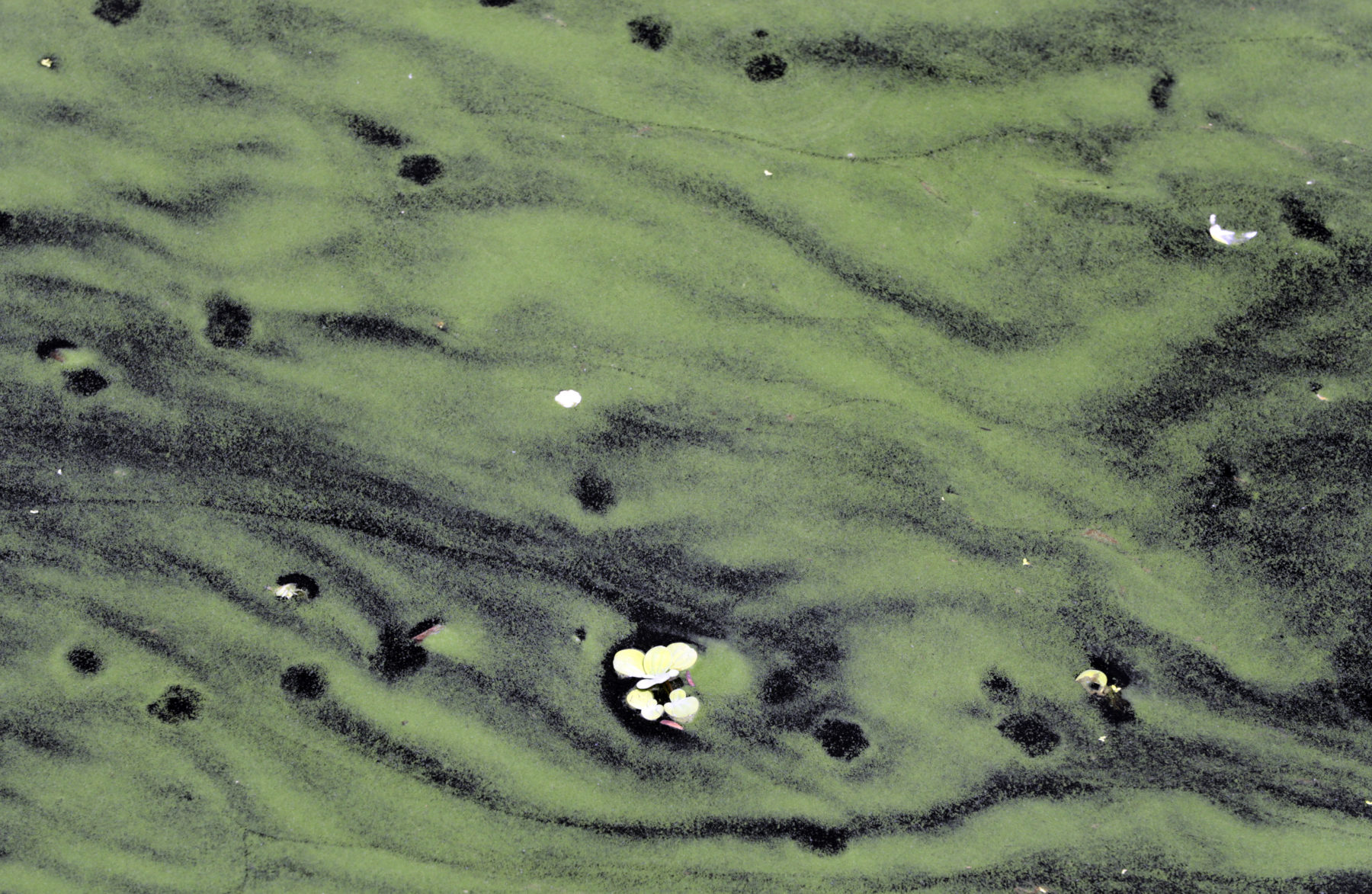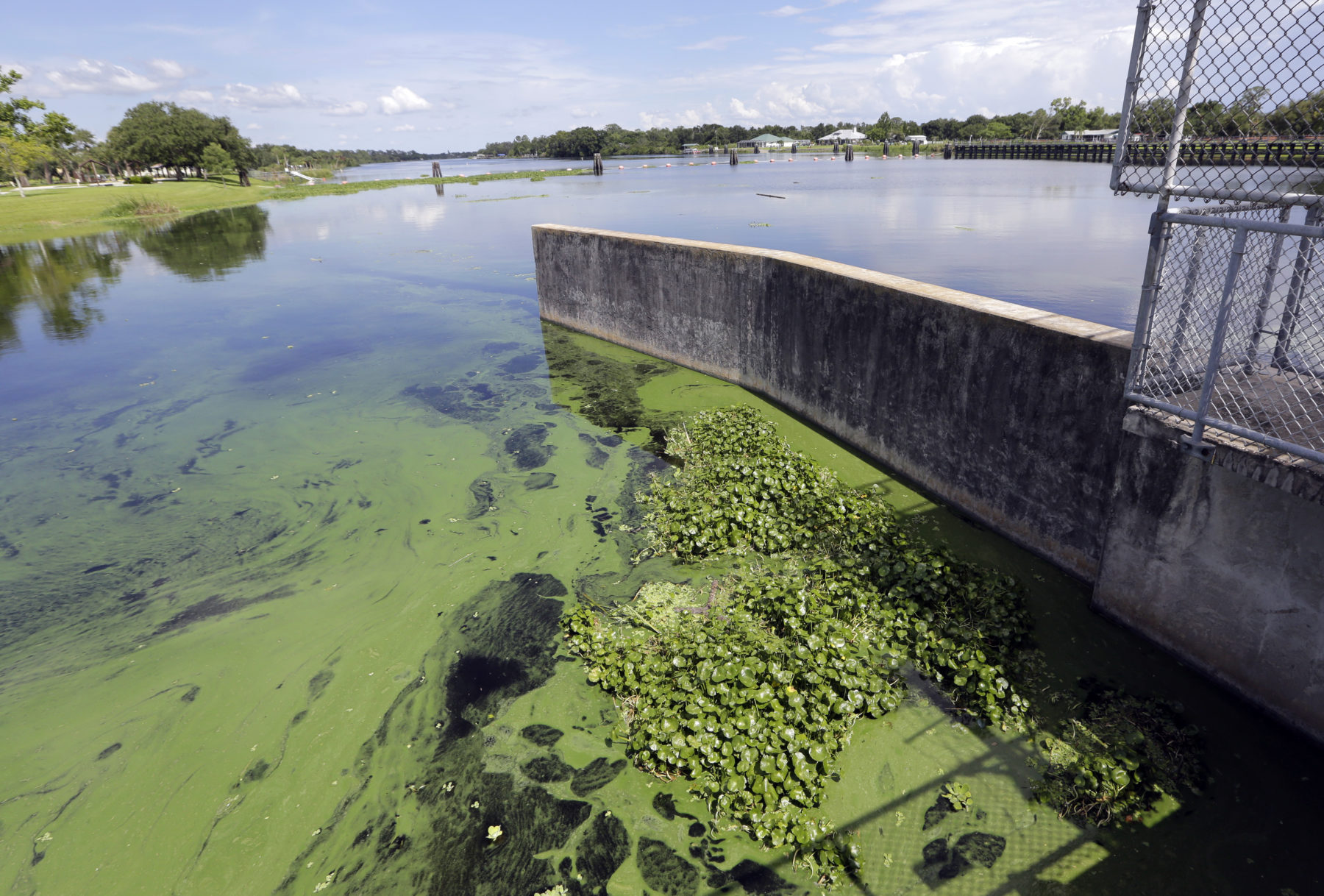Sustained algae blooms in Florida impacting ‘health, economy and ecology’

Both inland and on the coast, Florida is dealing with Harmful Algae Blooms (HABs) this summer.
Since early June, NOAA satellites have monitored a bloom of blue-green algae (a misnomer, as it is not algae but cyanobacteria) in Lake Okeechobee, Florida’s largest lake. At one point this summer, the bloom covered 90 percent of the lake’s surface. Scientists believe that Hurricane Irma is partly to blame for the massive bloom, as the heavy rains flushed nutrients from the surrounding land into the lake. Other factors that may increase the intensity of blooms include the warmer waters induced by climate change.
The water in Lake Okeechobee is held back by the Herbert Hoover Dike. The U.S. Army Corp of Engineers periodically discharges water from the lake into the rivers and estuaries when water levels get too high to preserve the integrity of the dike. Discharging water from the lake has also previously been used to flush blue-green algae blooms out into the ocean, where they are killed off by salinity.
Some experts are concerned about using this method for this summer’s bloom because the death of the blue-green algae would release nutrients that may worsen the existing red tide bloom on the Gulf Coast of Western Florida.
This red tide, an algal bloom of Karenia brevis, has persisted on the Southwest coast of Florida since October. Although HABs appear off the coast of Florida every year, this has been the longest red tide in over a decade. The last algae bloom of this magnitude was back in 2006.

Both the red tide and the cyanobacteria blooms have had major health consequences for marine animals and people. The blooms can create anoxic conditions when they decompose, smothering marine life and creating dead zones. Red tides can also release toxins that have killed masses of fish, turtles, and manatees. This toxin can also become airborne and cause respiratory irritation in humans, especially in those with respiratory illnesses such as asthma. For blue-green algae blooms, people who come into contact with the bloom can develop a rash, and if water containing cyanobacteria is ingested, it can lead to nausea, vomiting, and rarely, acute liver failure.
The algae blooms have also affected the local fishing industry. While shellfish can safely eat the red tide organisms, if a human eats a contaminated shellfish in which the toxin has bioaccumulated, it can lead to neurotoxic poisoning and even death. This has forced the shellfish industry to shut down in areas affected by the red tide and caused restaurants to order their shellfish from unaffected regions, some from out of state.
The blooms have also had a large impact on businesses outside of the food industry, such as the real estate and tourism markets. According to the Fort Myers News-Press, six Lee County mayors are asking for an expansion of the state of emergency declared by Governor Rick Scott last month.
On Monday, U.S Rep. Francis Rooney (R-Naples) sent a letter to the White House calling on the administration to formally declare a State of Emergency for Florida.
“The devastation we are experiencing in Southwest Florida is severely impacting our health, economy and ecology,” said Congressman Rooney. “Dead sea life, toxic algae, and red tide are crippling our area and although we are finally, thanks to our combined efforts, seeing progress on funding projects that will permanently fix our water quality, these projects will take years to complete. As conditions have worsened, we need to take action now. Declaring a State of Emergency will make a host of funding and resources available that would otherwise not be possible. Our current conditions are every bit as disastrous to us as the recent wildfires are to California and flooding has been to Michigan.”
Sources and Additional Readings
The Algae Bloom is Back But Why – Florida Seagrant
Algae Blooms – Florida Seagrant
A Toxic Algae Bloom in Florida is Slaughtering Marine Life by the Masses – CNN
Florida Algae Bloom Sends People to Hospital, Kill Marine Wildlife – The Weather Channel
Red Tide FAQ – Florida Fisheries and Wildlife Conservation Commission
Florida’s Algae Crisis: How is it Affecting Tourism and Other Businesses – Naples News
Red Tide Current Status – Florida Fisheries and Wildlife Conservation Commission
Gov. Rick Scott issues state of emergency for Lee, Martin counties following tour of algae blooms – News Press
